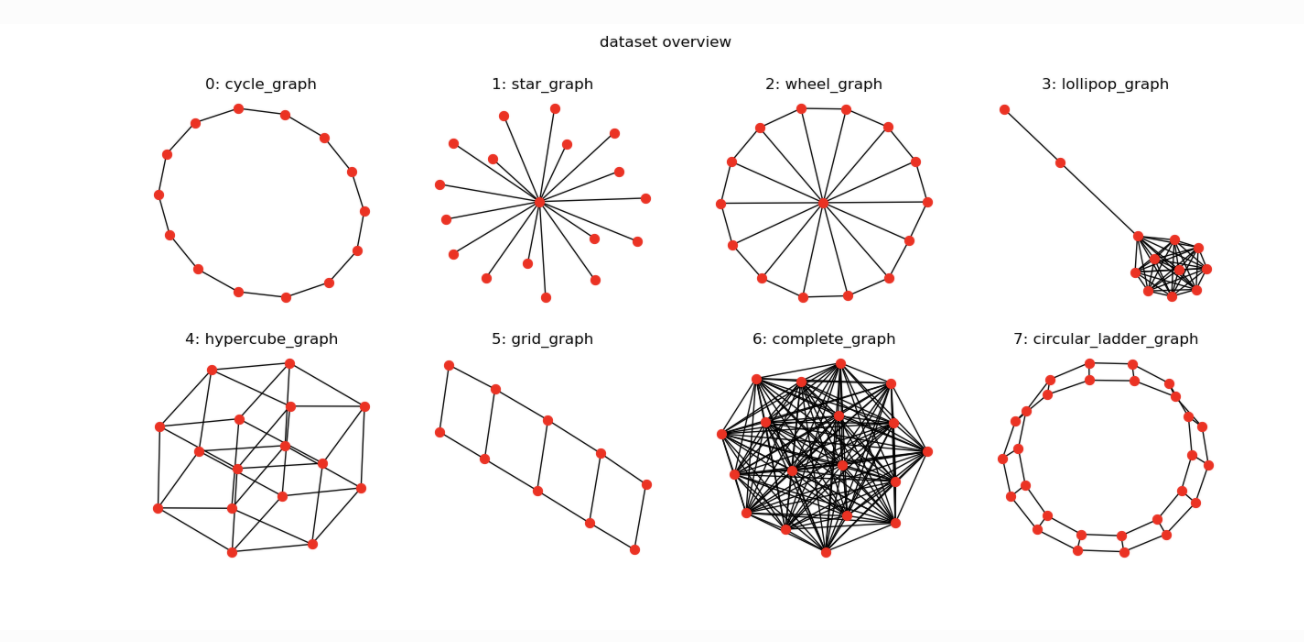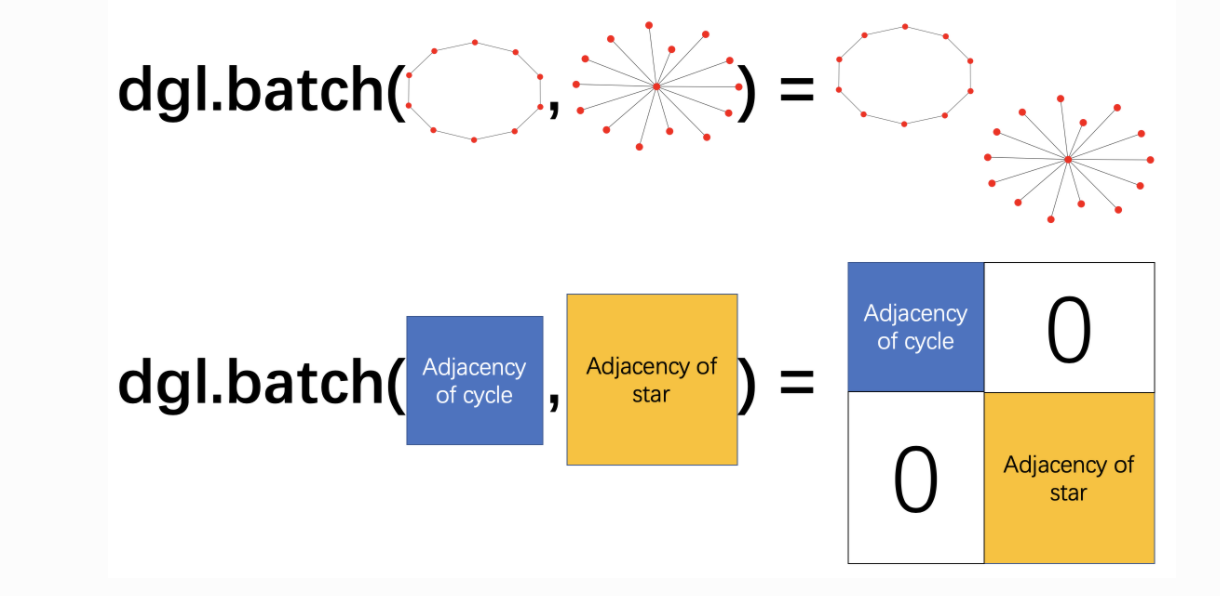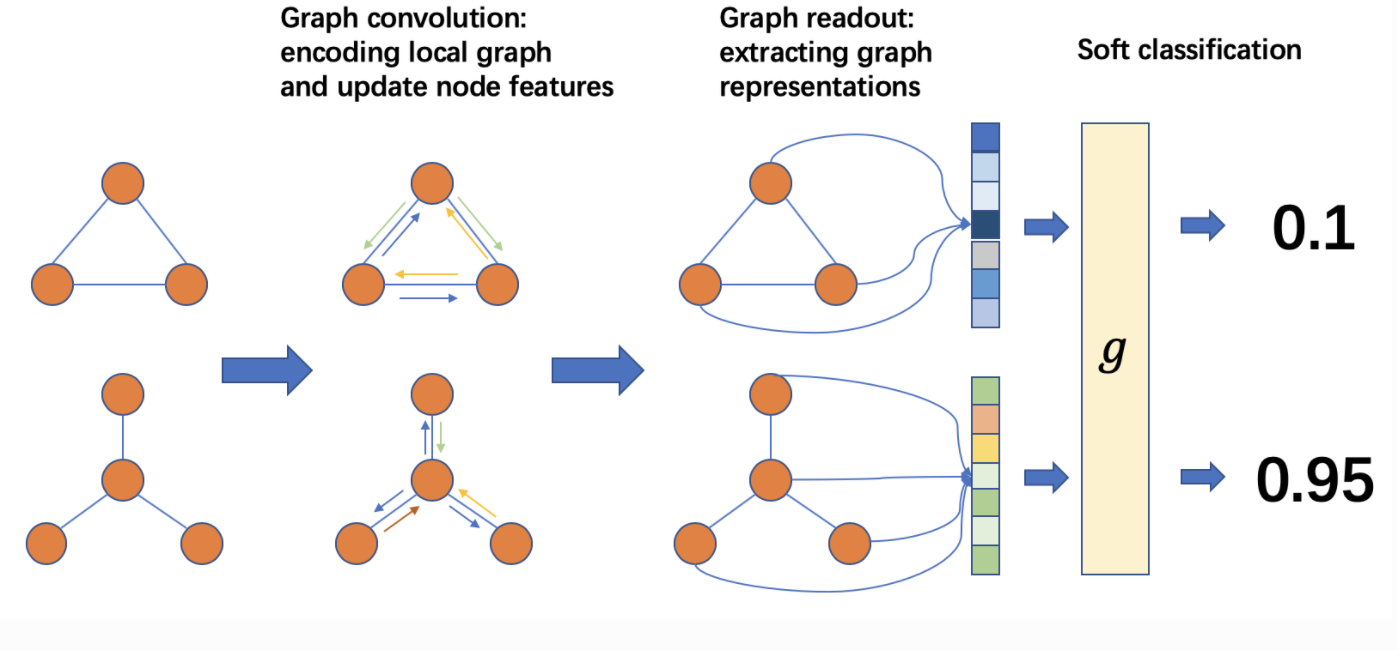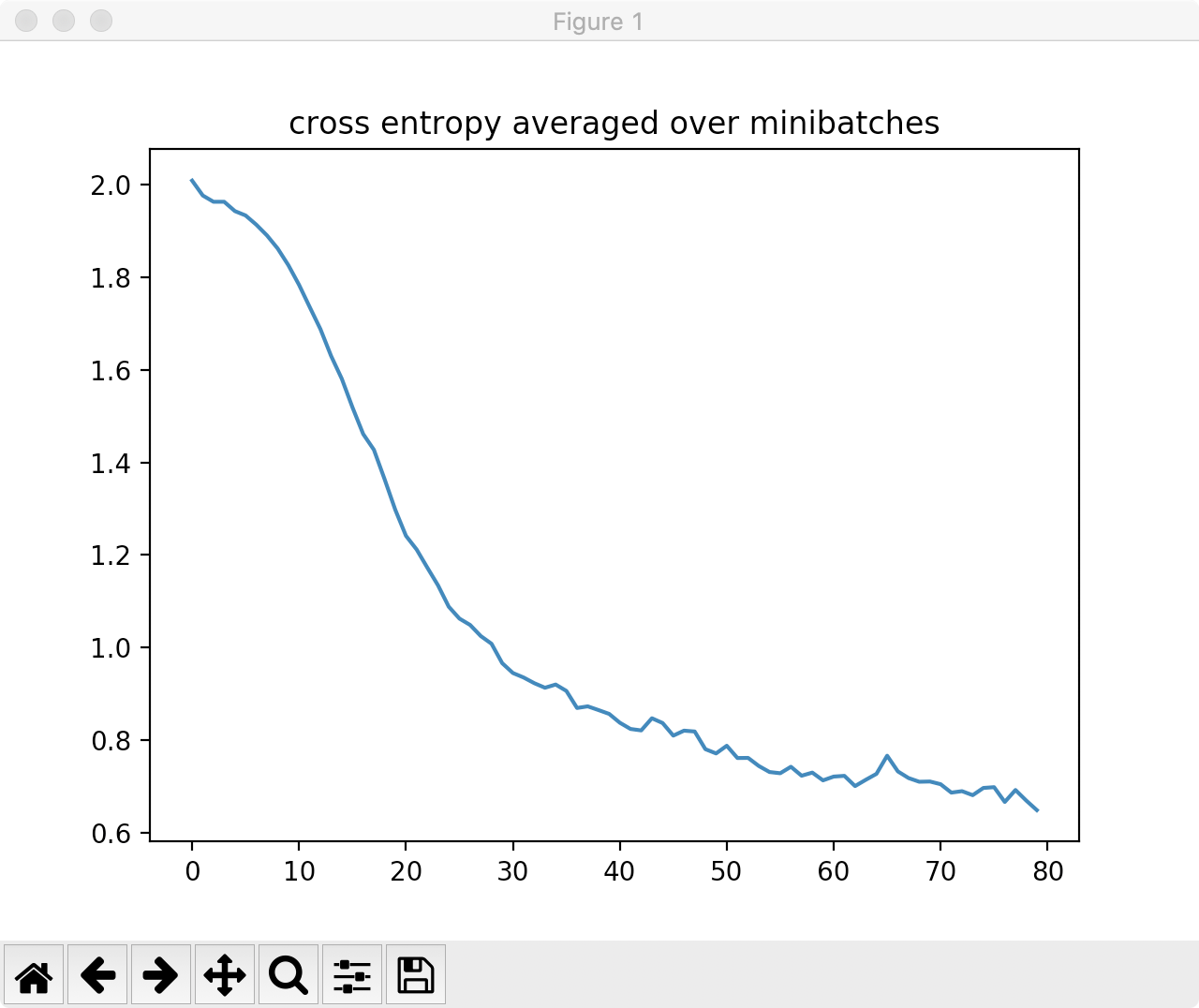本节中我们将使用DGL批处理多个大小和形状可变的图形。
使用包含如下8种类型图的数据集。

from dgl.data import MiniGCDataset import matplotlib.pyplot as plt import networkx as nx dataset = MiniGCDataset(80, 10, 20) ## 产生80个样本, 每个样本的节点数位于 [10,20]之间 graph, label = dataset[10] fig, ax = plt.subplots() nx.draw(graph.to_networkx(), ax=ax) ax.set_title('Class: {:d}'.format(label)) plt.show()

图像由于张量大小一致,很容易就可以进行批量学习。图如何进行批量学习?
图批量学习主要有以下两个挑战。
1. 图是稀疏的。 2. 不同图中的节点数和边数是不同的。
为了解决这个问题,DGL提供了dgl.batch() 进行批处理。 他的想法是将一批图视为一张大图,大图里面有多个不相连的连通分量吗,如下所示。

定义collate函数,从给定的Graph和label对列表中形成一个mini-batch。返回值依然是一个DGLGraph 和 label组成的tensor, 这样做DGL能够并行处理边和节点,大大提高了效率。
import dgl import torch def collate(samples): # The input `samples` is a list of pairs # (graph, label). graphs, labels = map(list, zip(*samples)) batched_graph = dgl.batch(graphs) return batched_graph, torch.tensor(labels)
整个算法的流程框架如下:
在一个batch的graph中,执行消息传递和GraphConv,使得节点与其他节点进行通信。 消息传递后,根据节点(边)的属性计算一个张量作为graph representation。 此步骤被称为readout或aggregation。 最后,将输入graph representation到分类器g中进行预测。

模型结构: 输入特征是节点的入度,通过两层图卷积之后,将图中所有节点的输出拼接起来,作为图的表示向量,再通过一个全连接神经网络进行分类。
from dgl.data import MiniGCDataset import dgl import torch from torch.utils.data import DataLoader from dgl.nn.pytorch import GraphConv import torch.nn as nn import torch.nn.functional as F class Classifier(nn.Module): def __init__(self, in_dim, hidden_dim, n_classes): super(Classifier, self).__init__() self.conv1 = GraphConv(in_dim, hidden_dim) self.conv2 = GraphConv(hidden_dim, hidden_dim) self.classify = nn.Linear(hidden_dim, n_classes) def forward(self, g): # 使用节点的入度作为初始特征 h = g.in_degrees().view(-1,1).float() h = F.relu(self.conv1(g, h)) h = F.relu(self.conv2(g, h)) g.ndata['h'] = h ## 节点特征经过两层卷积的输出 hg = dgl.mean_nodes(g, 'h') # 图的特征是所有节点特征的均值 y = self.classify(hg) return y
训练模型:
## 训练模型 trainset = MiniGCDataset(320, 10, 20) ## 产生80个样本, 每个样本的节点数位于 [10,20]之间 testset = MiniGCDataset(80, 10, 20) def collate(samples): # The input `samples` is a list of pairs # (graph, label). graphs, labels = map(list, zip(*samples)) batched_graph = dgl.batch(graphs) return batched_graph, torch.tensor(labels) data_loader = DataLoader(trainset, batch_size=32, shuffle=True,collate_fn=collate) model = Classifier(1, 256, trainset.num_classes) loss_func = nn.CrossEntropyLoss() optimizer = torch.optim.Adam(model.parameters(), lr = 0.001) model.train() epoch_losses = [] for epoch in range(80): epoch_loss = 0 for iter, (bg, label) in enumerate(data_loader): prediction = model(bg) loss = loss_func(prediction, label) optimizer.zero_grad() loss.backward() optimizer.step() epoch_loss+=loss.detach().item() epoch_loss /= (iter+1) print('Epoch {}, loss {:.4f}'.format(epoch, epoch_loss)) epoch_losses.append(epoch_loss)
plt.title('cross entropy averaged over minibatches') plt.plot(epoch_losses) plt.show()

测试模型:
model.eval() # Convert a list of tuples to two lists test_X, test_Y = map(list, zip(*testset)) test_bg = dgl.batch(test_X) test_Y = torch.tensor(test_Y).float().view(-1, 1) probs_Y = torch.softmax(model(test_bg), 1) sampled_Y = torch.multinomial(probs_Y, 1) argmax_Y = torch.max(probs_Y, 1)[1].view(-1, 1) print('Accuracy of sampled predictions on the test set: {:.4f}%'.format( (test_Y == sampled_Y.float()).sum().item() / len(test_Y) * 100)) print('Accuracy of argmax predictions on the test set: {:4f}%'.format( (test_Y == argmax_Y.float()).sum().item() / len(test_Y) * 100))